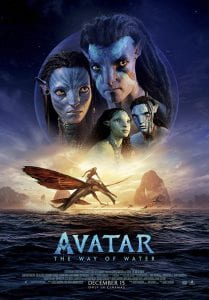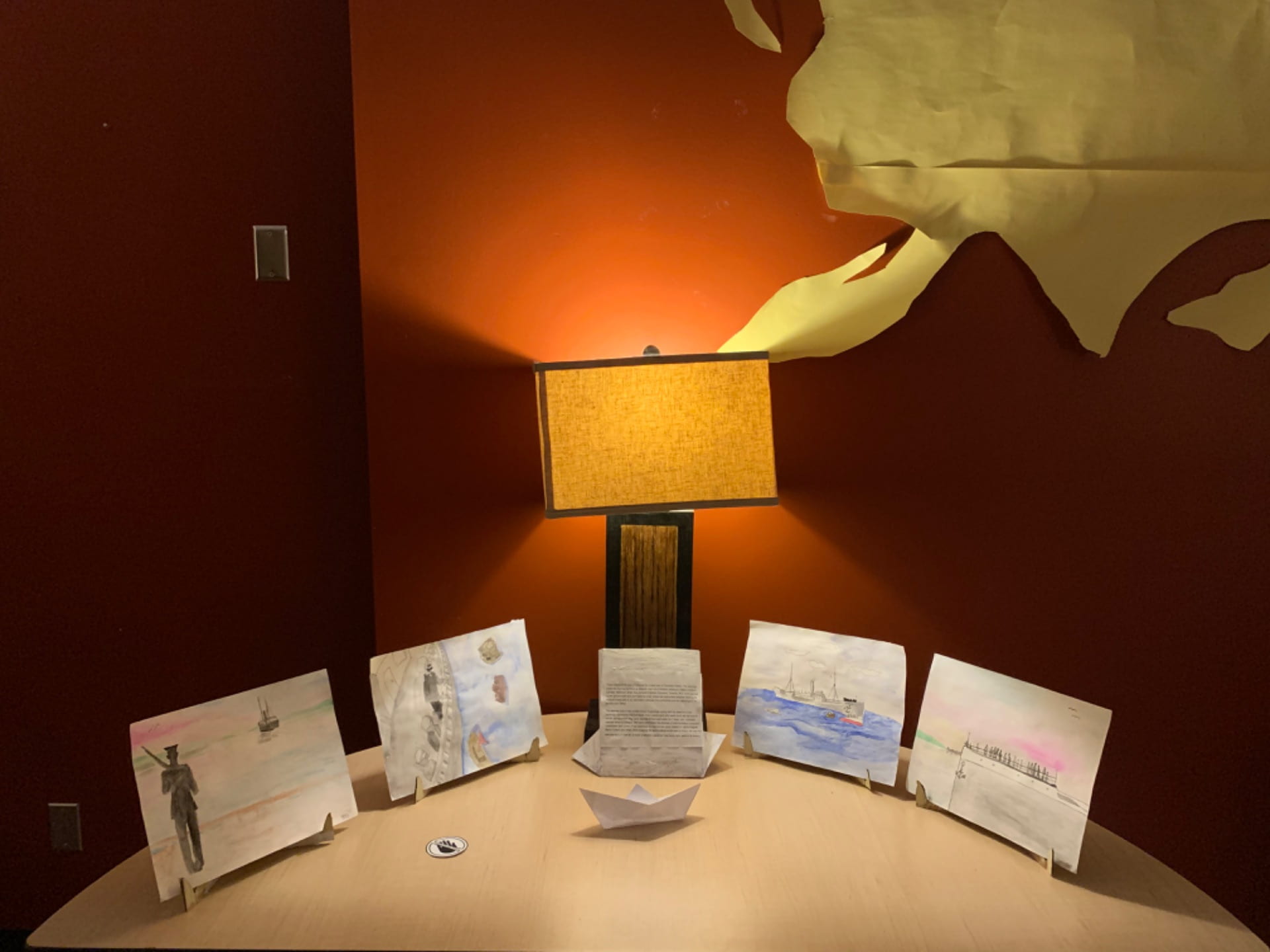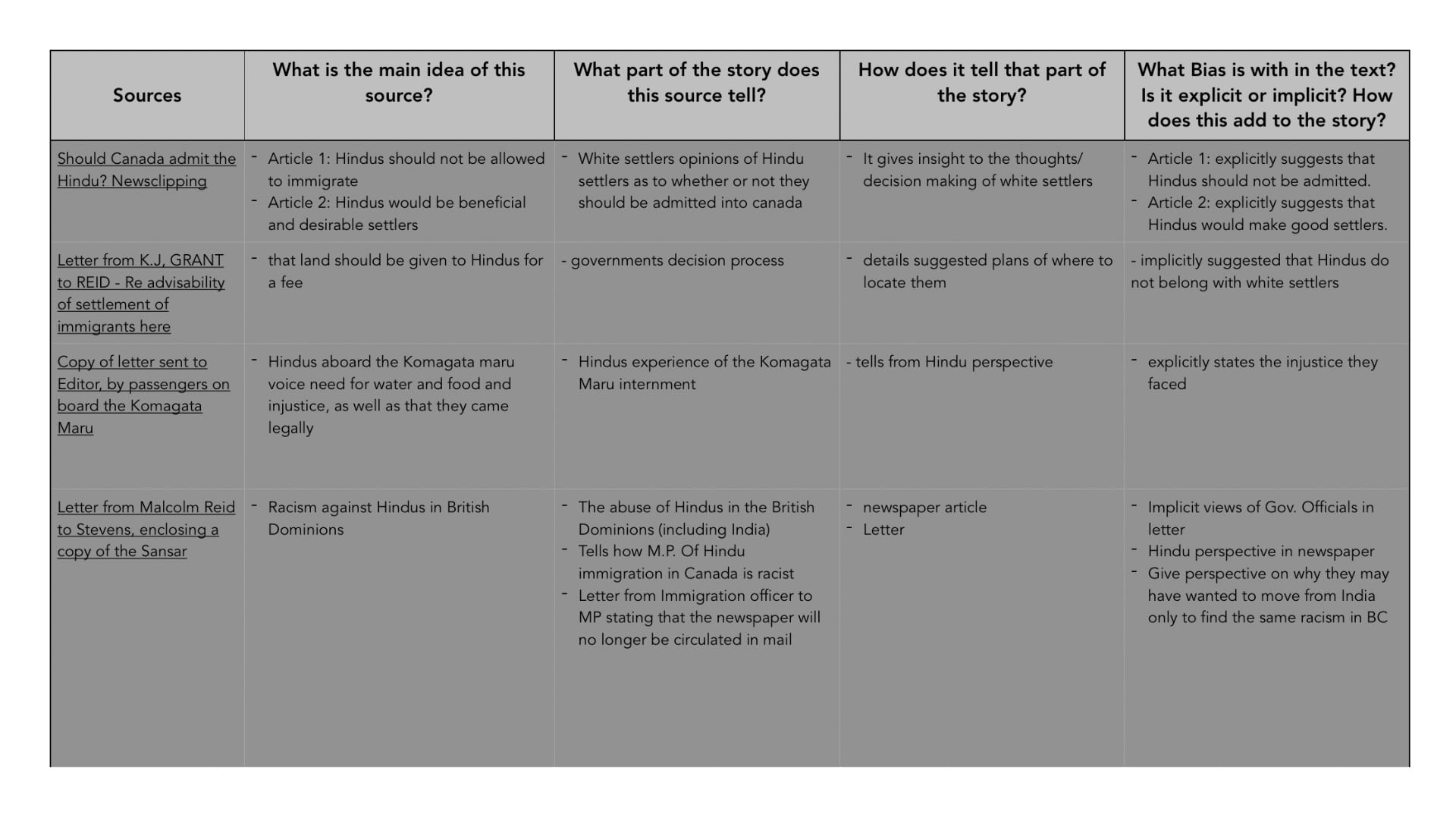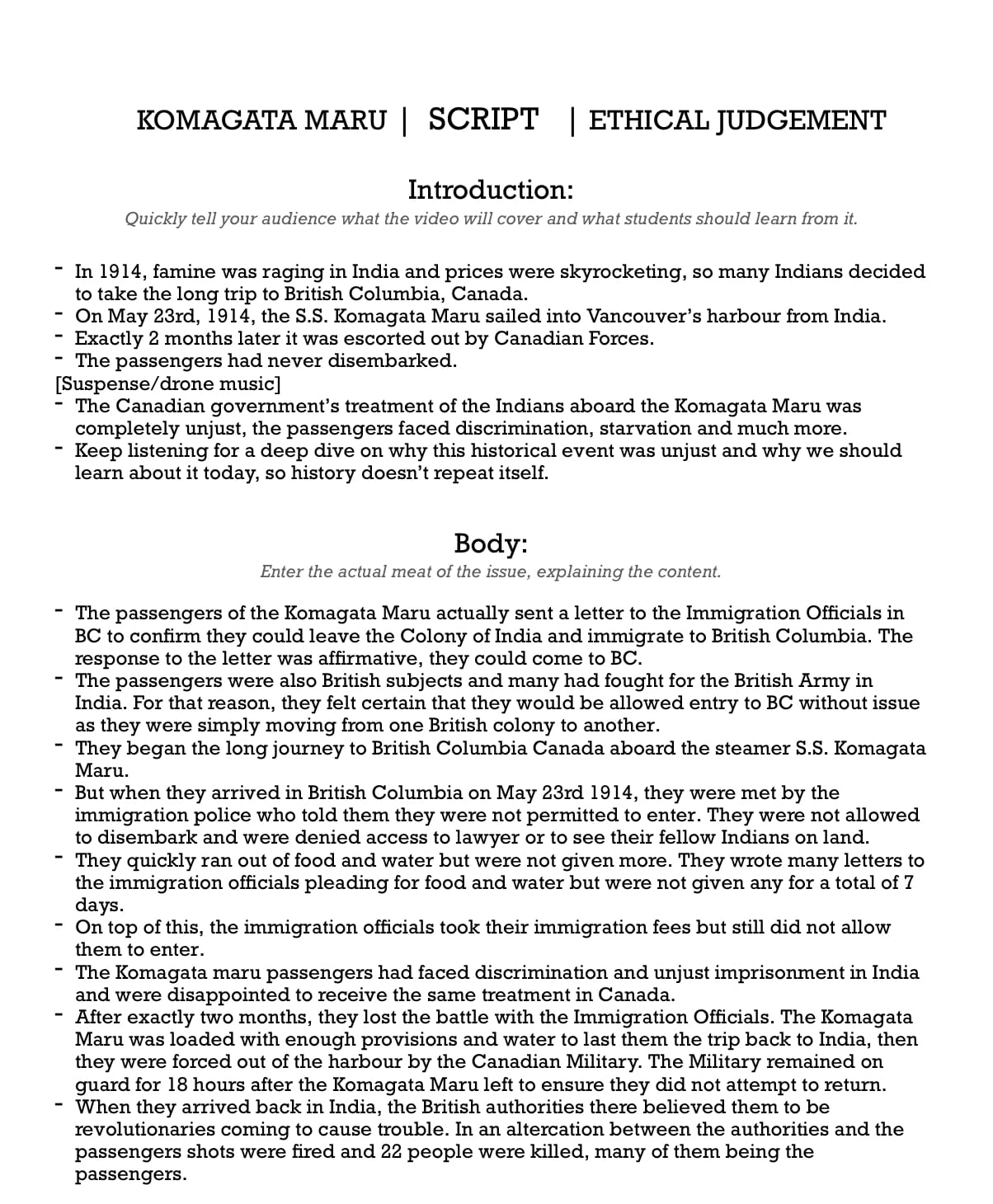We just finished a project on past wrongs in Canadian history. I focused on the Komagata Maru incident for this project. Our driving question was:
How can we keep apologies for past wrongs alive so they are remembered and not repeated today?
There are many ways that we can remember past wrongs, one of them being constructing monuments, which is what we did in this project. By constructing monuments we can tell the story of the wrong doing to ensure the event is not repeated. Which is exactly what we did for this project. Sabrina, Hector and I created a series of 4 paintings and an origami boat to tell the story of the Komagata Maru incident.
• • •
The first Keystone we completed was an interactive keynote presentation in which you could tap shapes to learn more about each part of the story. The first step for this Keystone was to gather a bunch of primary sources to tell the story with. I kept track of my sources in this table:
I then spent much too long designing the actual keynote, but I’m really proud of how it turned out. I linked shapes to slides with magic move for smooth transitions. This keystone enabled me to improve on the curricular competency “Analyzing: I can identify, analyze, and represent supportable conclusions having evaluated relevance, authenticity, and bias from a variety of sources” by deciding which sources to include and how best to summarize them.
Click the button below to download the presentation:
Don’t have a compatible device? Here’s screenshots of each slide:
• • •
For keystone 2, we individually recorded a statement of ethical judgment of why the event was wrong and why we should apologize for it today. By making a statement on whether or not an event was ethical, I was able to show by ability to achieve the curricular competency “Decision-Making: I can evaluate ethical implications and make complex judgments while identifying and respecting diverse communities.” To make my recording, I first wrote a script for what I was going to say:
I then recorded and edited in GarageBand to lower background noise and add music to make this final recording:
• • •
Keystone 3 was our final keystone, in which we created our monuments. I got the pleasure of working with Sabrina and Hector for this keystone. We created a series of 4 watercolour paintings to tell the key parts of the Komagata Maru story.
We also created a small origami boat to represent the Komagata Maru. The creativity this keystone required was a great way for us to show our skill at the curricular competency “Processing: I can think critically, creatively, and reflectively with a variety of strategies to process ideas and further my understanding.“
We then presented our monument at the PLP winter exhibition. The winter exhibition was centred around the theme of James Cameron’s “Avatar.” The driving question for the exhibition was:
What does James Cameron’s fantasy world of “Avatar” reveal about our own society?
I believe that the plaque we created to go along with our monument does an excellent job at answering this driving question:
These pieces of art are a memorial for a dark part of Canadian history. The paintings depict the Komagata Maru, a steamer ship full of Indians looking to make a home in Canada. However, when they arrived in British Columbia, Canada, they were rejected by the government and sent back to India, where the authorities believed them to be revolutionaries and in an altercation between the authorities and the passengers, 22 people were killed.
The steamer ship in the middle of our 4 paintings, along with the steamer in the paintings, represents the Komagata Maru passengers who were stuck on the boat for a month, during which they were starved of food and water for 7 days, and ultimately rejected entry to Canada. We have symbolized the themes of discrimination, exclusion, colonialism and racism in our paintings by making any parts related to the Komagata Maru in black and white, while keeping the surrounding landscape in colour. We feel this tells the story of how BC is such a beautiful place but has many dark parts in its history.
We centred our monument around the theme of colonialism as that was the room we decided to be in. The colonialism and imperialism room was the staff room and we worked with the grade 9s’ to decorate the room as the game of Risk (because Risk is basically the game of colonialism). We decorated the walls with cutouts of countries and lit the room with lamps which I thought look really cool with the red painted walls. The exhibition overall went way better than I expected and I really enjoyed seeing other people’s creations!
What I really enjoyed about this project was learning about a part of Canada’s history that I previously knew nothing about as well as creating a final product that looked really cool in our exhibition room! I hope you were able to learn something new about the Komagata Maru incident from reading this post and seeing our creations.
 Side note: All of PLP went on a ‘field trip’ to see “Avatar: The Way of Water” to celebrate a successful winter exhibition (also because the theme of the exhibition was Avatar so it only made sense)! Although extremely lengthy (three hours), I really enjoyed it (the comfy reclining theatre chairs were excellent). The CGI (computer generated image) was incredible and although a little too long and violent for my liking it was still a really good movie!
Side note: All of PLP went on a ‘field trip’ to see “Avatar: The Way of Water” to celebrate a successful winter exhibition (also because the theme of the exhibition was Avatar so it only made sense)! Although extremely lengthy (three hours), I really enjoyed it (the comfy reclining theatre chairs were excellent). The CGI (computer generated image) was incredible and although a little too long and violent for my liking it was still a really good movie!
Thanks for reading and happy holidays! ❄️
































